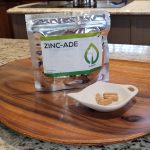Overview:
Dunaliella salina, commonly known as the sea salt microalga, is a species of green microalgae found in saltwater environments all over the world. The species is of considerable interest to scientists and commercial interests, as it is capable of producing high levels of carotenoids and other valuable compounds.
Dunaliella salina is a unicellular organism, with a single cell measuring between 1 and 15 μm in diameter. The cells are sometimes surrounded by an outer sheath, which helps to protect them from predators and the environment. The cell wall is composed of several layers and contains a variety of pigments, including carotenoids, which give the cells a reddish-brown hue. The cells are capable of photosynthesis, using light to convert carbon dioxide and water into energy in the form of sugar.
The cells of Dunaliella salina are also capable of producing a variety of compounds in response to environmental changes. These compounds include carotenoids, glycerolipids, fatty acids, and polysaccharides. Carotenoids are important for the organism’s coloration and protection from UV radiation, while the glycerolipids, fatty acids, and polysaccharides are used as a source of energy and as building blocks for other molecules.
The production of carotenoids is the primary reason why Dunaliella salina is of interest to scientists and commercial interests. Carotenoids are responsible for the yellow-orange color of certain fruits and vegetables, and are also important antioxidants. The carotenoids produced by Dunaliella salina are β-carotene, zeaxanthin, and lutein, all of which are important for the human diet.
Commercial production of Dunaliella salina is typically done in large, shallow ponds that are exposed to sunlight. The cells are grown in brine, which is a mixture of salt and water. Depending on the conditions, the cells can take from 1 to 4 weeks to reach maturity. During this time, the cells are subjected to various environmental conditions, including temperature, light intensity, and salinity. These conditions can be manipulated to increase the production of carotenoids and other compounds.
Once the cells have reached maturity, they can be harvested and processed. Processing typically involves centrifugation, filtration, and drying. The dried cells can then be used for various applications, including food coloring, dietary supplements, animal feeds, and cosmetics.
Dunaliella salina is an important species in the world of science and commerce, as it is capable of producing large amounts of carotenoids and other valuable compounds. Its ability to survive and thrive in a wide range of environments makes it an ideal organism for commercial production. The insights gained from studying this species can be applied to other organisms, and may lead to further breakthroughs in the fields of agriculture and biotechnology.
Dunaliella salina is a species of microscopic unicellular green algae that is found in saltwater. It is one of the most common and widely distributed microalgae in the world, with a range that extends from the tropics to the Arctic and Antarctic regions. It is also a major source of natural carotenoids, including beta-carotene, which is used as a dietary supplement and as a food coloring.
The history of Dunaliella salina dates back to the mid-1800s, when it was first described by the German botanist Gustav Wille in 1868. Wille observed the species in the brines of the Dead Sea and the Great Salt Lake in Utah. Over the following decades, Dunaliella salina was found to be present in many other saline environments, including the Great Saltworks at Arcachon in France and the Salton Sea in California.
Throughout the 20th century, Dunaliella salina has been studied extensively by scientists. Its unique physiology and ability to survive in extreme conditions has made it a model organism for studies of adaptation and evolution. It is also used in biotechnology applications, including the production of carotenoids, polyunsaturated fatty acids, and biofuels.
In recent years, Dunaliella salina has been studied in more depth as a potential source of renewable energy. It is being explored as a potential source of biodiesel and bioethanol, and its carotenoids are being studied for potential use as a food coloring or dietary supplement.
Overall, Dunaliella salina has a long and fascinating history, from its discovery in the Dead Sea in the 19th century to its current use as a model organism and potential source of renewable energy. Its ability to survive in extreme conditions and to produce a variety of useful compounds has made it an important species for research and commercial applications.
Side Effects of Dunaliella Salina:
The most common side effects of Dunaliella Salina are nausea, heartburn, and headache. Other less common side effects can include diarrhea, stomach upset, dizziness, or skin irritation. In rare cases, some people may experience an allergic reaction, such as hives or difficulty breathing.
Summary of Dunaliella Salina:
Dunaliella salina is a species of green algae that is found in saltwater habitats around the world. It is a unicellular organism that is known for its ability to produce high concentrations of glycerol, a compound that is used in the production of food and cosmetics. Additionally, D. salina is a potential source of carotenoids, compounds that can protect cells from damage caused by free radicals and improve vision. D. salina is also able to survive in extreme environments due to its ability to withstand high levels of salt and light. In recent years, D. salina has been used in biotechnology research, as it is a promising source of biofuel and is used to study the effects of climate change.
Frequently Asked Questions:
What is Dunaliella Salina?
Dunaliella Salina is a type of single-celled green algae that is found in saltwater and can produce high amounts of carotenoids, which are beneficial to human health.
What are the health benefits of Dunaliella Salina?
The carotenoids produced by Dunaliella Salina have been shown to have antioxidant, anti-inflammatory and anti-cancer properties. It is also believed to help improve vision, boost the immune system, and reduce the risk of cardiovascular diseases.
Where can I find Dunaliella Salina?
Dunaliella Salina is widely available in health food stores and online. It can also be grown in a home aquarium. It is an ingredient in Purium’s ZinC-ADE
Is Dunaliella Salina safe to consume?
Yes, Dunaliella Salina is generally considered safe to consume. However, it is always best to consult with a healthcare professional before taking any dietary supplement.









